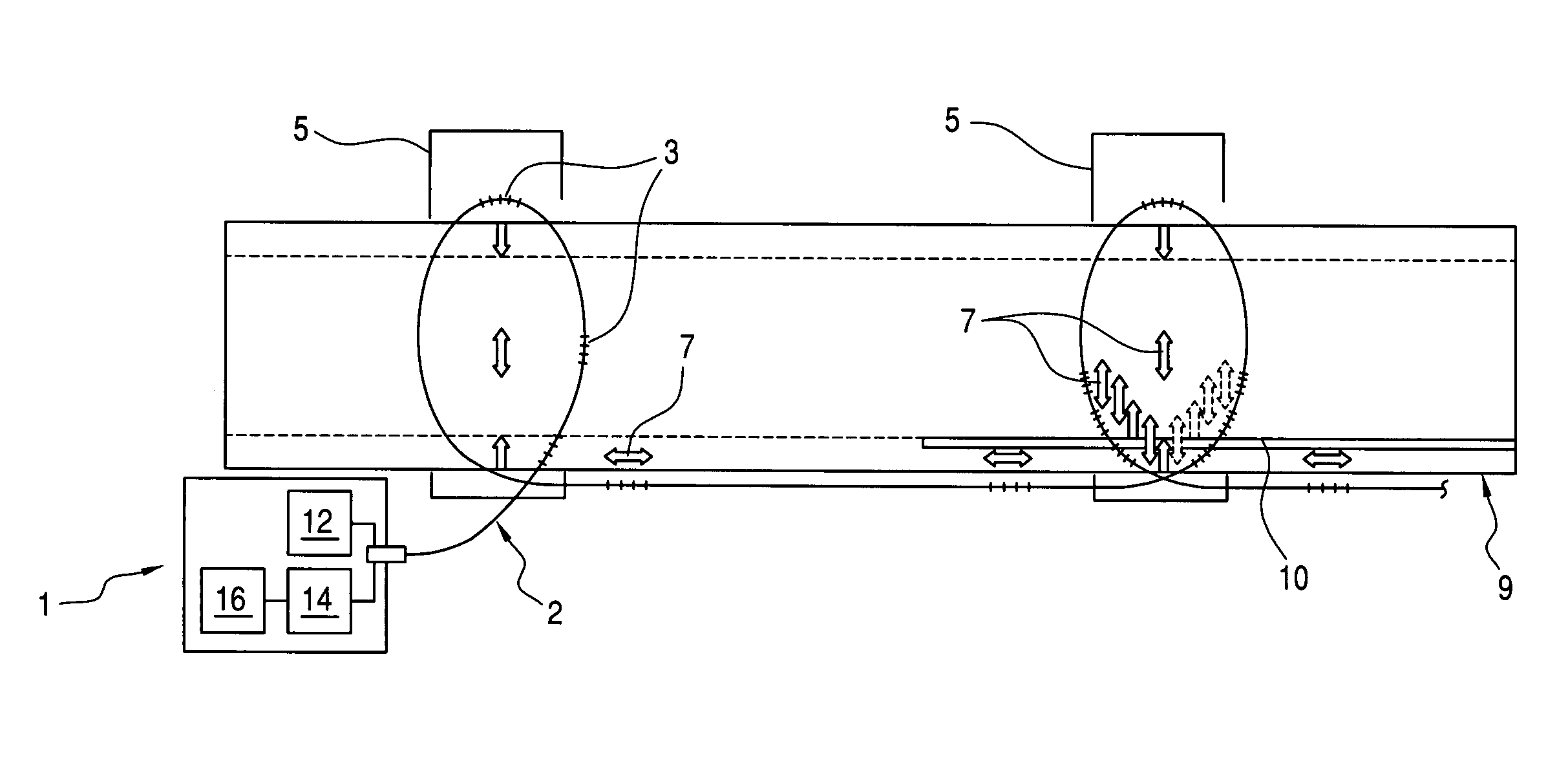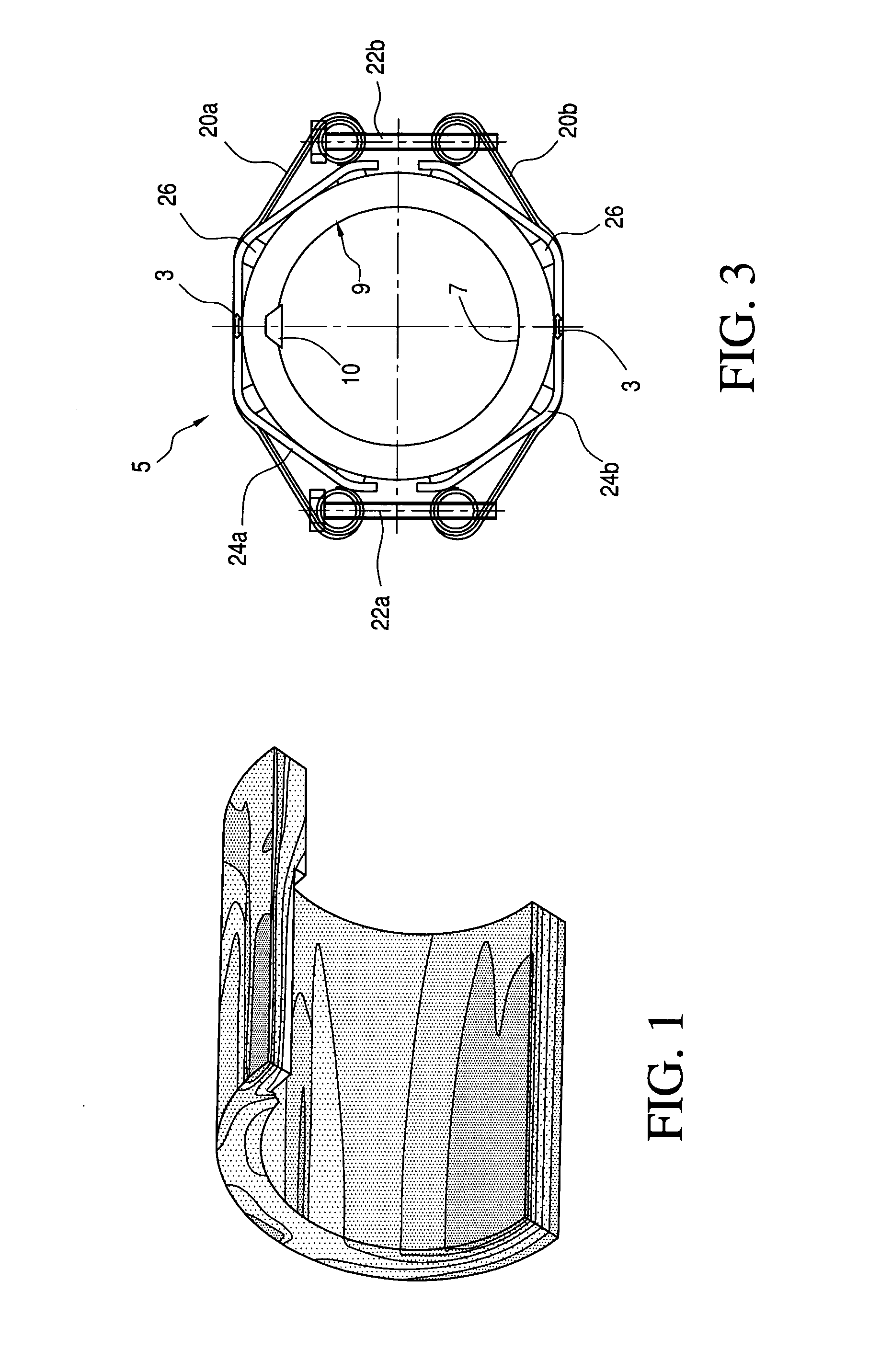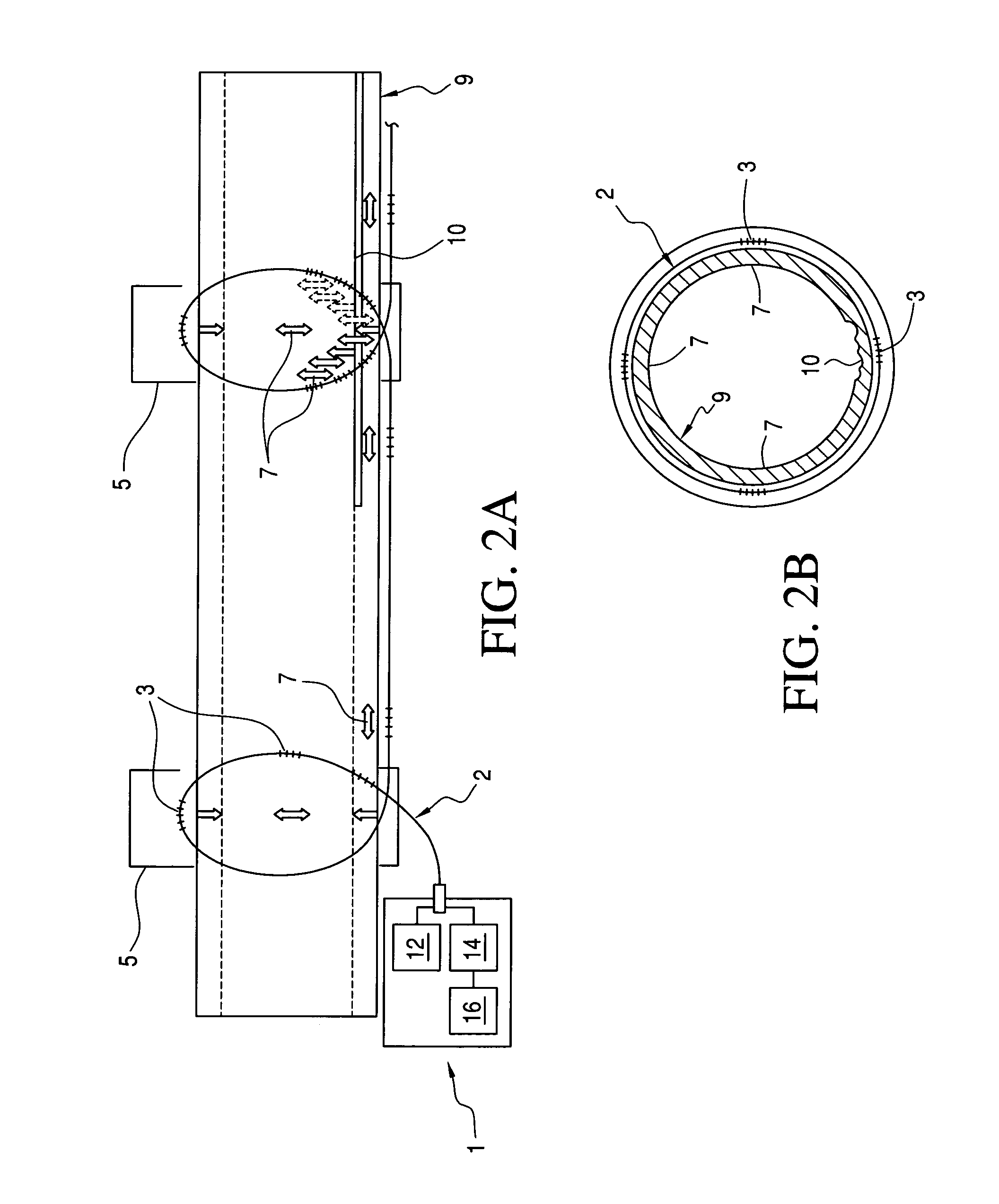System and method for uniform and localized wall thickness measurement using fiber optic sensors
a fiber optic sensor and localized wall thickness technology, applied in the field of strain measurement, can solve the problems of insufficient sensitivity of fiber optic sensors, etc., to achieve accurate determination of wall thickness with metal loss, high signal-to-noise ratio, and high resolution
- Summary
- Abstract
- Description
- Claims
- Application Information
AI Technical Summary
Benefits of technology
Problems solved by technology
Method used
Image
Examples
Embodiment Construction
[0024]The present invention generally relates to a method and system for determining wall thickness measurements of pressurized pipes, elbows, vessels, and the like, employing fiber optics sensors, and a validation testing procedure, and working examples therefor. For example, for a pipe or vessel, the resultant strain on the structure due to internal pressure is a function of the wall thickness. Other factors including bending or twisting forces, thermal expansion, and the like, can also impact on the strain. Accordingly, in an exemplary embodiment, Fiber Bragg Gratings (FBGs) are employed to provide discrete high resolution strain measurements over the surface of pressurized pipes and vessels. The FBGs can be employed along with various correction algorithms, compensation techniques, and the like, for example, to determine wall thickness readings, and the like. In addition, the exemplary embodiments, advantageously, provide the capability to map out discrete measurements of strain...
PUM
| Property | Measurement | Unit |
|---|---|---|
| thickness | aaaaa | aaaaa |
| thickness | aaaaa | aaaaa |
| internal pressure | aaaaa | aaaaa |
Abstract
Description
Claims
Application Information
 Login to View More
Login to View More - R&D
- Intellectual Property
- Life Sciences
- Materials
- Tech Scout
- Unparalleled Data Quality
- Higher Quality Content
- 60% Fewer Hallucinations
Browse by: Latest US Patents, China's latest patents, Technical Efficacy Thesaurus, Application Domain, Technology Topic, Popular Technical Reports.
© 2025 PatSnap. All rights reserved.Legal|Privacy policy|Modern Slavery Act Transparency Statement|Sitemap|About US| Contact US: help@patsnap.com



